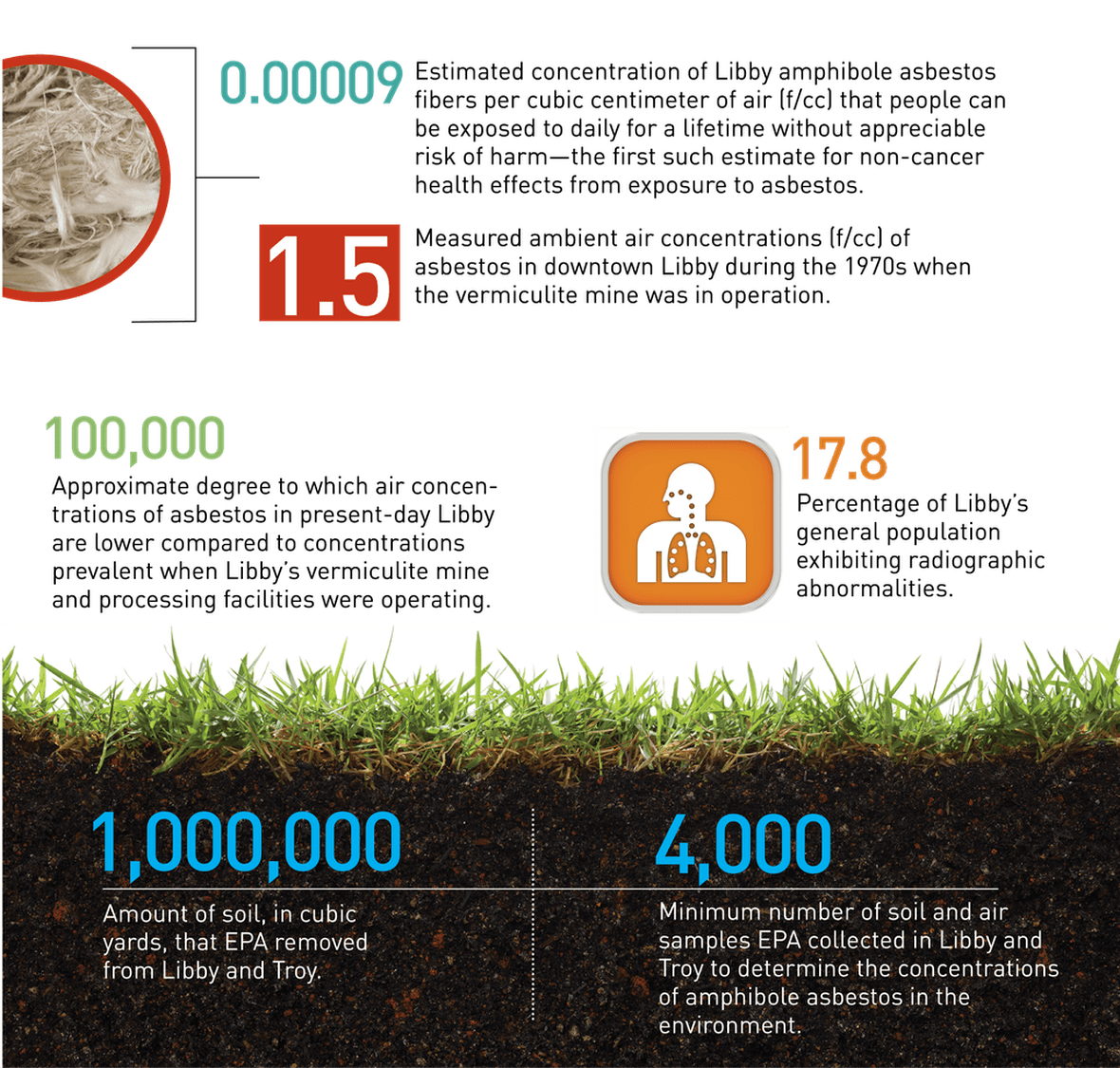DEPARTMENTS
BY THE NUMBERS
EPA Risk Assessment for Libby Amphibole Asbestos
In December, EPA released its final risk assessment for the Superfund site encompassing the neighboring towns of Libby and Troy, in northwest Montana. The area is the world’s largest source of vermiculite, a versatile mineral that was mined in Libby beginning in the 1920s and shipped throughout North America in products ranging from insulation to fertilizer. As is now widely known, Libby vermiculite is thoroughly contaminated with amphibole asbestos, and the mining and processing of vermiculite ore spread asbestos throughout the town. Health effects of exposure to asbestos include lung cancer, mesothelioma, asbestosis, and pleural thickening.
In 1999, EPA declared a public health emergency in Libby and initiated a cleanup of indoor and outdoor areas. Two years later, screening conducted by the agency found that rates of mesothelioma among Libby residents were 1,000 times the national average. According to EPA, the final risk assessment released in December indicates that the air quality in Libby today is similar to that of other Montana towns. The information below is taken from EPA documents.

SOURCES
EPA Dec. 8, 2014 news release
Source documents available from EPA Region 8 Web page, “Libby Asbestos Draft Site-wide Human Health Risk Assessment"
RELATED CONTENT
“Living with a Legacy: Foundation Scholar from ‘The Town Left to Die’ Pursues Career in IH,” The Synergist, March 2013

LINKS:
• Back to Summary Page
• The Synergist TOC

